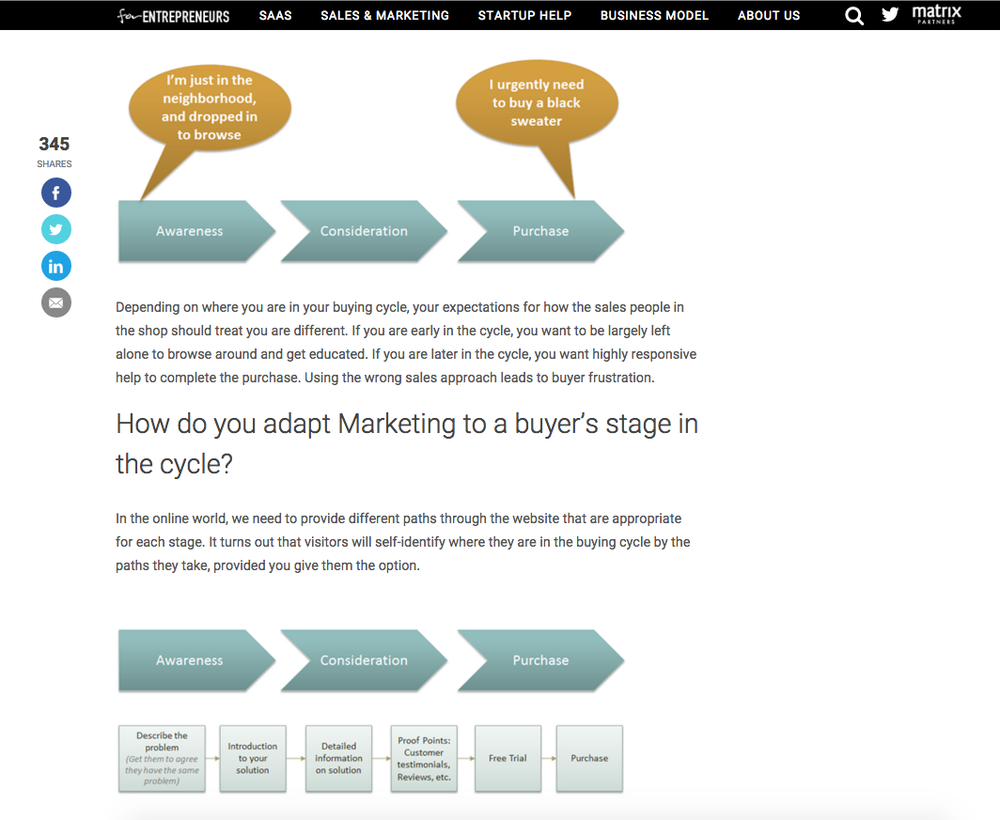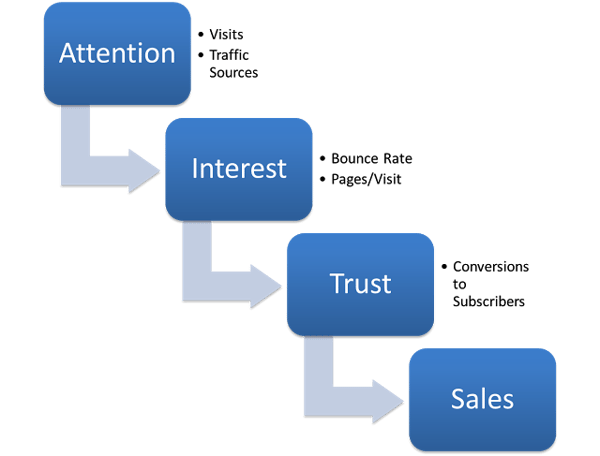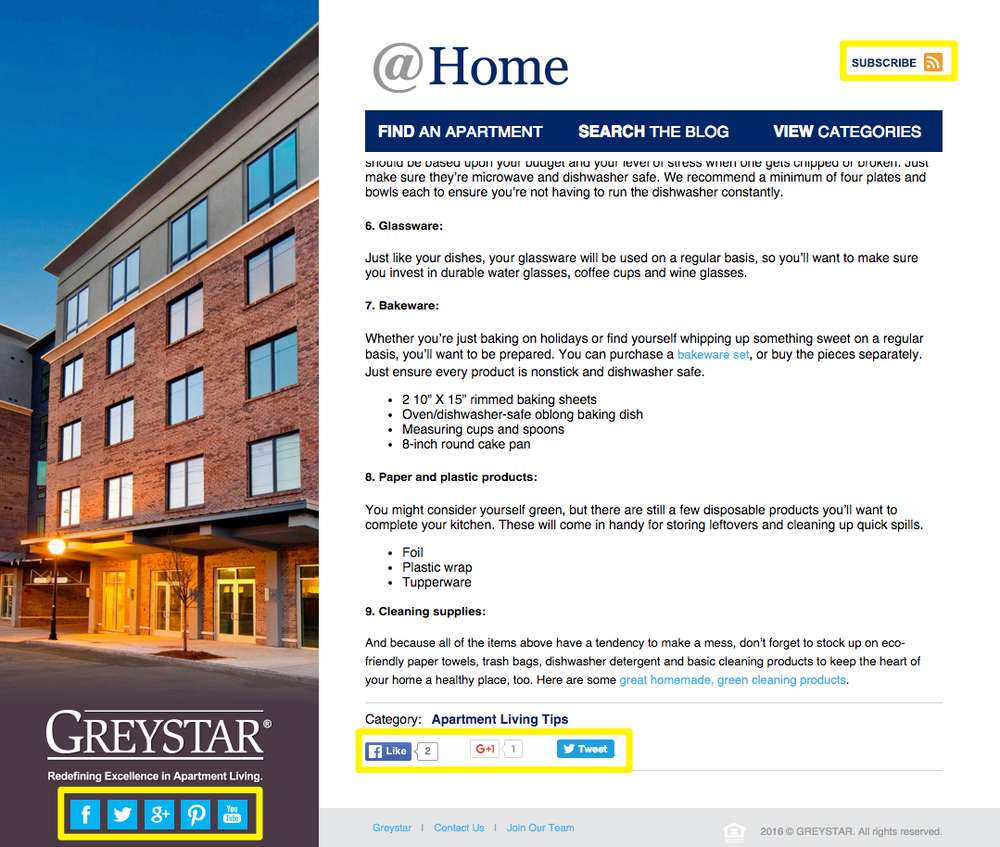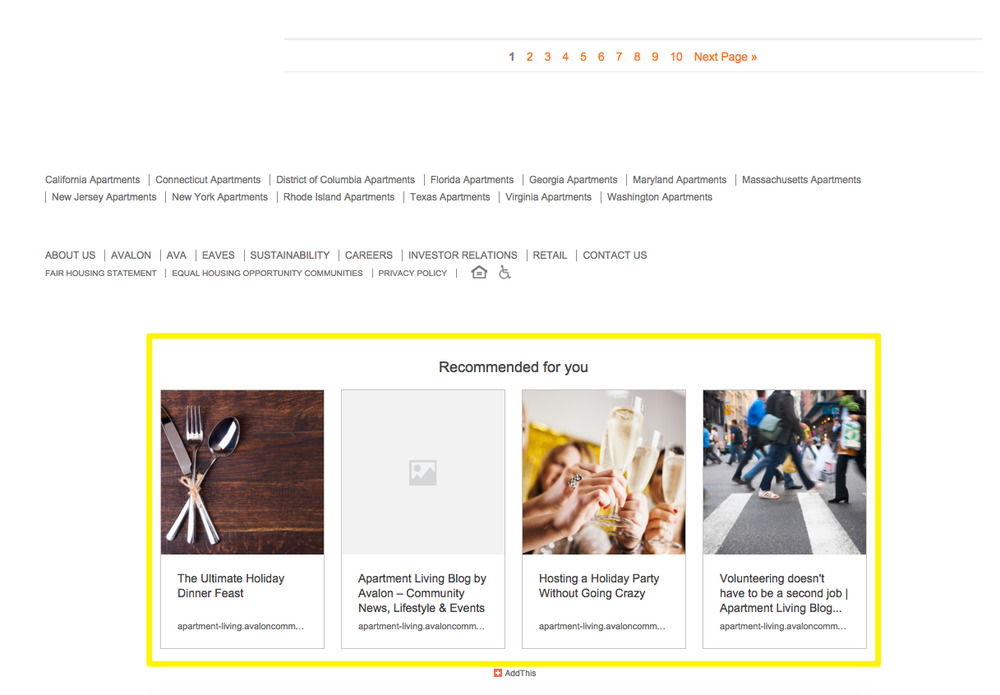
Blogging is the Achilles Heel of digital marketing.
Yet it doesn’t always get the credit it deserves.
Without content, your website will be ineffectual. Your emails won’t drive results. And your ads will be ignored by most.
The problem, is that it’s difficult to see blogging results. Let alone track them.
And that commonly leads many to discount the impact or underinvest in content creation resources.
However if you can start by identifying a few key metrics that align with your business objectives, you’ll begin to understand how blogging impacts your marketing efforts and improve results to reap the long-term ROI it provides.
Let’s get started!
Whenever the benefits of blogging and social media are discussed, it’s inevitable that the conversation turns to ill-defined ‘intangibles’ like thought leadership or engagement.
While those are very real benefits that have merit, they don’t make it easy to quantify or compare blogging results with other channels like most traditional marketers are used to.
Especially when you compare it to something so black-and-white like Google AdWords, which provides a clear cut ROI on each new signed lease.
The problem, is that this comparing the two are like apples and oranges.
AdWords converts so well because it’s driven by intent.
People search for something specific, so the chances of them ultimately making a purchasing decision is much higher.
Whereas blogging and social media tend to be rooted in serendipity.
Sure, someone might stumble across a blog post and love it.
But they’re probably not willing to hand over their credit card or fill out an application just yet, because they’re not even in the market for a new place.
It’s no wonder then, why many multifamily property owners haven’t jumped on the bandwagon and underinvest in these new technologies.
Especially if you’re not sure of how or where to begin tracking results.
But the surprising truth is that these organic, ‘inbound’ methods actually drive a higher ROI in most cases.
The latest State of Inbound Marketing report shows that marketers unanimously agree that ‘inbound’ channels produce a better ROI than ‘outbound’ methods across the board.

Almost all studies comparing ‘inbound’ vs. ‘outbound’ show similar favorable results, including these two from Search Engine Journal that illustrate the hidden value blogging leads to:
One of the primary reasons for such a favorable return is that ‘inbound’ and other blogging-based tactics work together and scale more effectively than paid counterparts.
For example, your blog posts create content for social media updates, email newsletters, and PR.
Those social, email and press updates help attract more attention and links.
That extra attention and links increase SEO, which in turn brings in more people to those old, original blog posts that started it all. Perfect harmony.
Paid media on the other hand, while incredibly effective, doesn’t produce the same synergistic benefits.
There’s a ratio of spending $X to get $Y, and you keep having to reinvest that original $X for future returns.
Your ROI doesn’t improve over time, and many times only declines as costs rise due to increased competitive pressure.
And paid actions in one channel (i.e. billboards), don’t help or improve results in another paid channel (i.e. direct mail) the same way ‘inbound’ methods do.
So blogging can be profitable. You just have to know where to look.
Here’s where to get started.
Purchasing behavior has evolved tremendously over the past few years thanks to the internet.
In the old days, there was little transparency into a customer’s options or alternatives, and information gathering was a time consuming, if not impractical process for most people.
But not anymore.
Consumers now proactively research their options and alternatives, with specific product or property information and reviews being only a few clicks away.
Typically, people will pass through stages of a ‘buying cycle’ before ultimately completing a purchase.
David Skok, a VC with Matrix Partners, does a great job highlighting this on his blog, For Entrepreneurs:

People might skip around or travel along this path at varying speeds, but ultimately everyone progresses through these at one point or another.
Following the same logic, there’s also an old copywriting formula from decades ago called AIDA, which stands for: Attention, Interest, Desire, Action.
Just like before, people will pass through these various stages prior to purchasing, and your job (as the marketer) is to use different tactics at each step to help increase the amount of people passing converting to the next step (as fast as possible).
One of the best ways to eliminate confusion for your blogging efforts is to align a few key metrics to each stage, to simplify life and provide clarity behind what’s working, what’s not, and how your marketing efforts can adjust to improve results.
For example:

That means over time, you want to grab their attention, peak their interest (to keep them coming back!), speak to a desire they have, and give them a call to action only when they’re ready and primed.
The first step is to figure out where you are currently, and begin tracking those results over time to see how trends and patterns emerge.
The good news, is that Google Analytics provides a ton of data readily available to help you answer this question.
The bad news, is that Google Analytics provides a ton of data.
The key is to make sense of the noise, and focus on the essential.
Using a similar framework that was introduced above, we can now create custom dashboards to highlight a few key metrics we want to focus on.
By simply clicking New Dashboard and then, Add a Widget once inside your Google Analytics account, you can select the specific (limited!) metrics you’re looking for and ignore the other onslaught of raw data.

Once you’ve got a simple dashboard setup, it’s time to compare those results against the prior period (i.e. previous 30 days) or prior year to see how and where you can improve.
Then you can start coming up with specific tactics to address each stage.
For example, let’s say you want to increase new visits (or sessions in Google Analytics parlance).
Greystar has done a great job providing multiple ways for people reading their blog posts to share or spread this information and recommend it to family and friends, helping to expose their content to new interested people who might be looking for something in the future.

The next step down the funnel is Interest or Consideration.
Here, the goal is to generally keep people around long enough to begin building familiarity and trust with your brand.
That means using tactics to improve the amount of time people are spending on your site (as measured by Time on Site, or Pages viewed per Session).
Avalon Communities does a great job by using a subtle pop-up in the lower right hand corner of the screen after you read one blog post, recommending a new, similar topic to read next.

At the bottom of their blog, they also have a ‘Recommended Posts’ section to again provide similar topics you might be interested in, and increase their chances of keeping you on-site long enough to get your email address or inspire you to visit on of their properties (or in other words, the next critical steps in the buying cycle).

Blogging, when done right, can be incredibly profitable.
The best way to analyze your efforts is by identifying a few simple, appropriate metrics from different categories that mimic how people search online and purchase today.
Typically, these key events happen when people are becoming aware of your brand or property (Awareness), when people are actively looking for a new apartment (Consideration), and when people are touring properties and ready to fill out an application (Decision).
Once you’ve identified the major KPI’s most appropriate from your objectives, you can setup a basic dashboard in Google Analytics to track results over time.
This information will help you determine how your digital marketing efforts are working, or how they should improve.
And they’ll finally add some clarity to how and where your blogging efforts are paying off.
These Stories on Content Marketing

San Diego, CA
600 B St.
San Diego, CA 92101

Austin, TX
600 Congress Ave.
Austin TX 78701

Washington, DC
1875 Connecticut Ave NW
Washington, DC 20009
Copyright © 2024 AM Digital, LLC Terms of Service Privacy Policy
Street Address
City, ST 00000
Call us: 1-800-COMPANY
(800-000-0000)